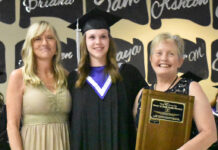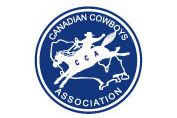With the anticipated arrival of 124,000 doses of COVID-19 vaccines over the next number of weeks, Saskatchewan has outlined a series of timelines where provincial residents can be immunized against COVID-19.
“Based on the number of vaccines we now expect to receive, we should be able to begin vaccinating people in their 60s by April 5, people in their 50s by April 19, people in their 40s by May 10, people in their 30s by May 31, and all other adults we should be able to start vaccinating everyone else by June 14,” Saskatchewan Premier Scott Moe stated during a COVID-19 update on Tuesday, March 9.
Since launching the vaccination campaign back in December, Saskatchewan has received 95,000 vaccines, so the province will receive more than double the amount which has been distributed over the first three months of province wide immunizations.
During Phase One of the vaccination campaign, the province has now virtually completed all first doses in all Long Term Care and Personal Care Homes in the province, as well has having completed about 56 per cent of second doses. Premier Moe also estimated that approximately 37 per cent of all seniors over age 80 have now received their first dose of the vaccine.
With the province having previous announced they are delaying the second dose of vaccines, Saskatchewan’s vaccination strategy is aiming to protect the oldest age-demographic first.
“It will mean everyone aged 70 and above will have had their chance to get their first shot by early in April. This should significantly reduce the number of serious cases as well as hospitalizations.”
“This is a turning point and this is a good day for Saskatchewan and a good day for Saskatchewan people, due to the fact that we will have access to a much larger number of vaccines in days and weeks ahead,” Premier Moe said.
With increased vaccinations on the horizon, Saskatchewan is also experiencing a slow in COVID-19 transmission. Saskatchewan’s seven day average for new cases is 141, the lowest total in nearly four months and down 60 per cent from its peak in January. Additional hospitalizations are beginning to stabilize, with 139 hospitalizations as of March 9.
The reduced totals are allowing the province to cautiously ease restrictions with a pair of changes to the existing Public Health Orders.
As of yesterday, Saskatchewan residents were able to create a ‘bubble’ up to a maximum of 10 individuals in a home at any one time, and limiting this contact to two to three consistent households. Residents are reminded not to join multiple bubbles.
Additionally, effective March 19, worship services will expand 30 per cent of capacity or 150 attendees, whichever is the lesser. Masking and physical distancing regulations remain intact. The worship service relaxed guidelines do not apply to receptions or non-ceremonial gatherings.
“We think it’s safe to cautiously allow people to meet between households. But again I would say for the most part don’t change what you’re doing. If you are meeting people from not in your household meet outdoors,” explained Saskatchewan’s Chief Medical Health Officer, Dr. Saqib Shahab.
Despite the relaxed restrictions, Dr. Shahab reminded people to continue taking the necessary precautions to shield the most vulnerable individuals until immunization immunity is more wide spread.
“Whenever you’re indoors, especially with people who may be at higher risk, do your best to shield them in an indoor setting. So I think that’s going to be critical for the next weeks or months. The last thing we need is for our friends or relatives who are at high risk to get COVID before they get vaccinated.”
Premier Moe also asked people to be cautious over the coming days and weeks as vaccinations pick up, and individuals aged 60 to 69 years will be vaccinated by April 5.
“They may chose to act a little bit differently to ensure that they are protecting themselves, that those families may choose to have access in a little bit of a different fashion over the next number of weeks just to ensure that we do remain safe through this very critical period of time in the next few weeks,” Moe stated.
On March 9, Regina had the highest number of active COVID-19 cases, accounting for 420 of the province’s 1,414 active cases. Additionally, 28 of the 35 confirmed variants of concern announced on March 9 were detected in Regina.
This higher case level has prompted the province to announce the delivery of Saskatchewan’s first batch of 15,500 doses of the AstraZeneca vaccine to individuals aged 60 to 64 in Regina, along with priority healthcare workers. A series of drive-thru clinics in Regina will also direct a number of upcoming doses to targeted individuals.
“We are making these vaccines available to Saskatchewan people as quickly as we receive them, and to some degree a geography prioritized basis, as I mentioned we’re making a number of vaccines available in Regina as early as this week to ensure that we are addressing the presence of the variants in the City of Regina,” Premier Moe said.






